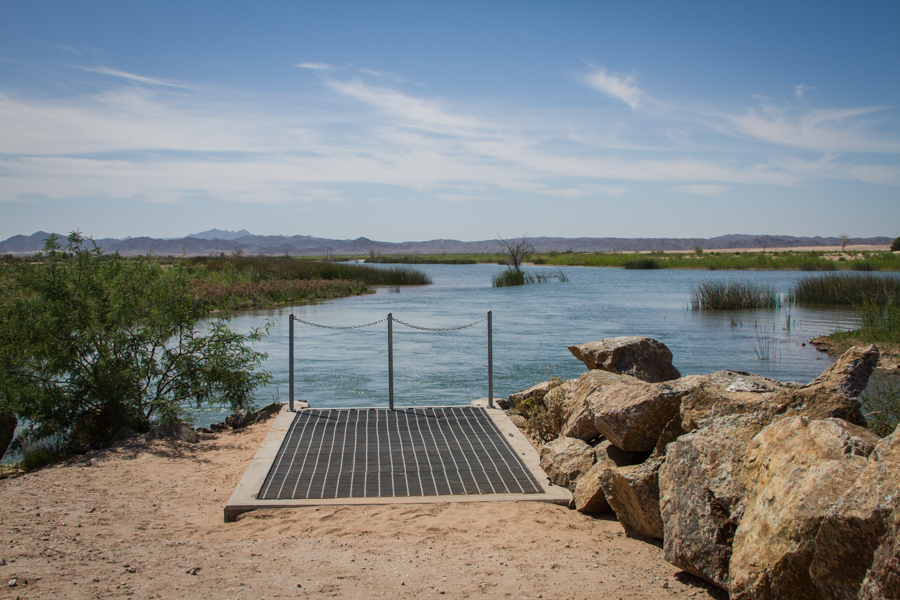“Collaboration is a much better way of working than litigation.” – Estevan López, Commissioner, U.S. Bureau of Reclamation, during today’s festivities marking the tenth anniversary of the Multi-Species Conservation Program on the Lower Colorado River.
Jerry Zimmerman, former executive director of the Colorado River Board of California, told a story this morning about how the effort that became the Lower Colorado Multi-Species Conservation Program grew out of a series of conversations on a bus tour of the Upper Colorado River Basin. Stuck in a bus together on one of these things, I guess, leaves time for chatting.
It was the mid-1990s, and Colorado River managers were watching the chaos in California caused by endangered species battles over the Sacramento-San Joaquin Delta. That issue still has the delta tied up in knots, but the effort launched to prevent such tangles on the Lower Colorado seems to have sidestepped a similar fate.
We toured the 1,100 acre Laguna Division Conservation Area, just downstream from Imperial Dam on the Arizona side of the Colorado River. This is a classic post-dam western river flood plain. Take away the floods, and the flats become choked and overgrown – in this area with salt cedar. The bureau tore out the salt cedar and contoured the land to simulate the old backwaters and meanders that would have existed before thanks to the natural flood-recession pattern. Cottonwoods, willows and other native plantings are already starting to green up, and a plumbing system has been installed that allows managers to raise and lower water levels to simulate a bit of the natural flood cycle, albeit at a much more modest scale. The water managers assume the new system ends up using the same amount of water that had been consumed by the old salt cedar thickets, so no new water rights were required.
We see much more modest versions of this approach on the Rio Grande in central New Mexico, though I know my New Mexico friends working on this would die for the $25 million budget used on this site. Everything on the Colorado is better funded.
It’s engineering attempting to mimic nature, but as engineering goes, it’s pretty cool stuff. The egrets have already moved in, and so far Zimmerman’s hope of avoiding endangered species entanglements on the Lower Colorado has been met.

